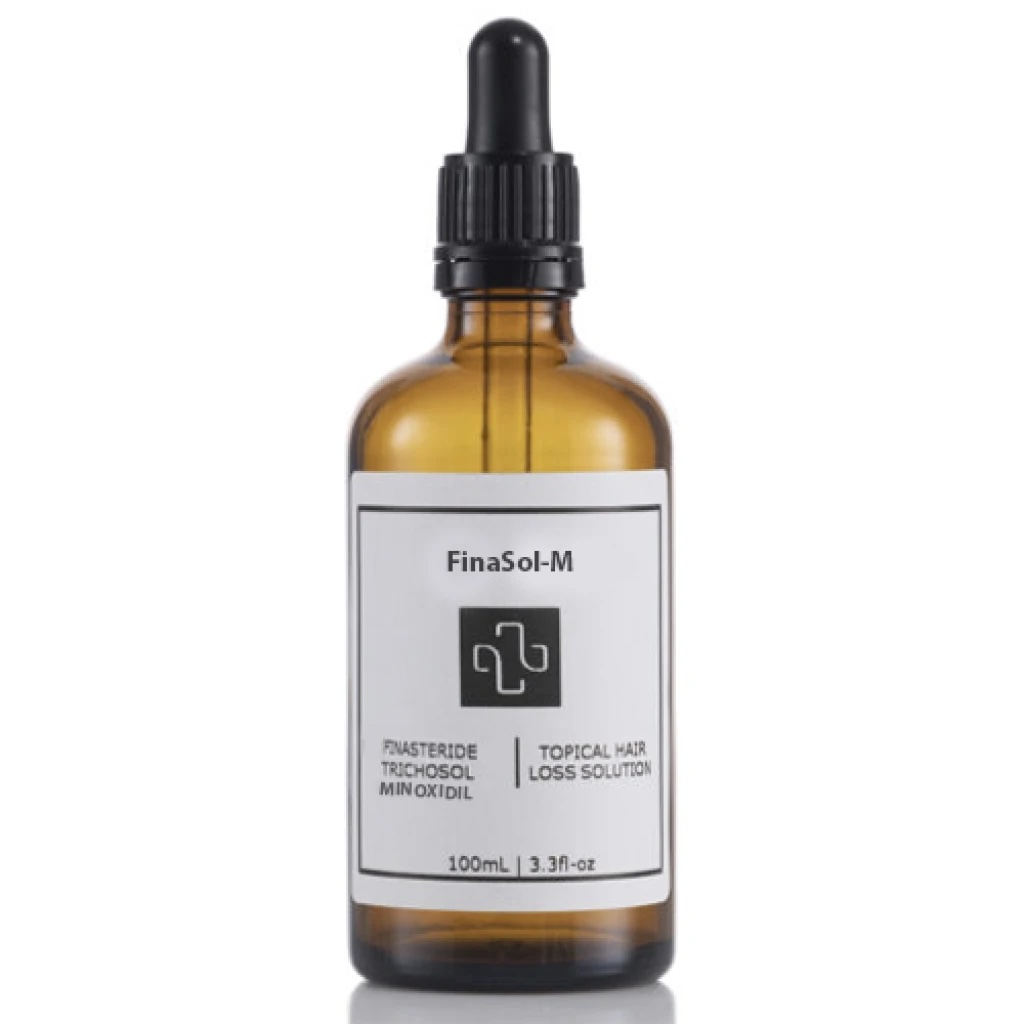Topical finasteride for hair loss
19th March 2024

Topical finasteride has emerged as a novel therapeutic treatment for individuals suffering with hair loss. It’s proving a promising intervention for many, especially those with androgenetic alopecia – more commonly known as ‘pattern baldness’.
But what actually is topical finasteride and most importantly, how effective is it?
Understanding topical finasteride
Finasteride is a type of inhibitor medication, meaning it reduces the formation of a hormone that is one of the major causes of pattern hair loss. It has been used as an oral treatment (pill form) for androgenetic alopecia since 1997, when it was licensed as the branded tablet, Propecia.
Research has found that dihydrotestosterone (DHT), a male sex hormone, plays a crucial role in hair loss. DHT causes hair loss through a process known as miniaturisation. This is when affected hair shafts become progressively thinner and shorter, with a reduced length of the growth phase in their growth cycle.
Testosterone is converted to DHT by the enzyme 5 alpha reductase (5AR). Finasteride works by blocking this enzyme action, reducing the levels of DHT in the blood and in the scalp. By reducing DHT levels, finasteride helps to slow or halt hair loss and in some cases, even thicken hair.
Topical finasteride comes in a scalp solution or foam.
What is the difference between oral and topical finasteride?
Traditionally, finasteride has been administered orally, in pill form. While FDA approved (U.S. Food and Drug Administration) and effective for many users, oral finasteride may cause some side effects in a very small number of patients, including sexual dysfunction, reduced fertility, and low mood or depression.
For example, in one study, oral finasteride use was associated with persistent sexual side effects in 1.4% of users. This led to the description of a condition known as post-finasteride syndrome.
These potential side effects have led some patients to seek alternative treatments.
Using finasteride topically, rather than taking it as an oral pill, is likely to reduce the amount of the drug in the blood and lower the chances of side effects. It’s not currently approved by the FDA, but it’s regularly used ‘off-label’ to treat hair loss.
Who is topical finasteride suitable for?
As finasteride targets a male sex hormone (DHT), the majority of research and the use of finasteride has focused on men with androgenetic alopecia (male pattern loss). This is the most common form of hair loss, characterised by thinning hair, often starting with a receding hairline or balding at the crown.
Less research has been done on the effects of finasteride in women and the medication is not widely prescribed to women. Finasteride has a potential ‘teratogenic’ effect, meaning that if a woman becomes pregnant whilst taking the medication, it can cause the abnormal development of a baby. The risk of this is thought to be higher in oral finasteride. There may be some instances where women can take finasteride though, for example, if someone is postmenopausal.
Topical finasteride is thought to be safer for women in this respect, and some research shows that topical finasteride offers favourable results to women with pattern hair loss. However, more research is needed to confirm whether topical finasteride is a safe and effective treatment for women. Women should only take finasteride under strict medical supervision.
How effective is topical finasteride?
Some clinical studies have evaluated the effectiveness of topical finasteride. A systematic review – a review of multiple studies – into topical finasteride use in androgenetic alopecia found the medication was linked to a significant decrease in the rate of hair loss. An increase in total hair count and positive hair growth were also witnessed, suggesting that topical finasteride may help to actually thicken hair too.
A more recent review found that topical finasteride demonstrated safe and effective results in both men and women with pattern hair loss.
Many people ask whether topical or oral finasteride is more effective, but there’s currently not enough research to establish which administration is best. Studies comparing both versions found they have similar results in terms of stabilising hair loss. Deciding between topical and oral finasteride also depends on lots of individual factors, so it’s important to get advice and guidance from a professional before taking either version of finasteride.
What are the side effects of topical finasteride?
Topical finasteride is much less likely to cause the side effects that are seen in a very small number of people taking oral finasteride (such as sexual dysfunction and reduced fertility). However, like all medications, there are still some side effects of topical finasteride to be aware of.
There are limited studies into topical finasteride, but so far, evidence shows the side effects of topical finasteride are generally localised to the scalp and may include:
- irritation
- burning
- itching
- dandruff
- redness.
These side effects are usually mild and are temporary.
Frequently asked questions
How long does finasteride take to work?
Topical finasteride starts working straight away, but it can take up to 4 to 6 months before you start seeing a reduction in hair loss.
How does finasteride differ from minoxidil?
Finasteride works by blocking the conversion of testosterone to DHT. This helps to slow down hair loss and finasteride can often help to promote hair thickness. Alternatively, minoxidil works to improve circulation to the scalp and helps to extend the growth phase of the hair cycle. Both finasteride and minoxidil are available in oral and topical forms. The two medications can be combined, for instance, in a minoxidil and finasteride topical solution. However, more research is needed to find the most effective strength and administration method.
Do I need a prescription for topical finasteride?
Yes, topical finasteride requires a prescription. At The Maitland Clinic, we are able to prescribe medication and we also provide ongoing monitoring and advice. This means we can adjust your prescription accordingly.
When should I start using topical finasteride?
Topical finasteride is most effective when used in the early stages of hair loss. So, the sooner you notice and treat hair loss, the better.
Who shouldn’t use topical finasteride?
You should avoid using topical finasteride if you could be allergic to any of the ingredients. Topical finasteride also isn’t suitable for anyone who:
- is pregnant, breastfeeding, or trying to conceive
- has bladder or liver problems
- under the age of 18.
It’s important to discuss your suitability for any hair loss medication with a qualified professional.
How long does topical finasteride work for?
Topical finasteride will continue to work for as long as you continue to take it. This means that it can be a lifelong treatment for those who want to continue mitigating hair loss. It’s important to remember that hair loss will likely continue progressing over time, but finasteride will help to delay this or reduce the speed at which this happens.
Hair loss medication at The Maitland Clinic
With a myriad of hair loss medications now available, it can be difficult to know which is the right solution for you. At The Maitland Clinic, we take an in-depth consultation of your health history, hair condition, and overall preferences.
This helps us to establish what the best medication might be for you. We also take time to talk through the medication and side effects so that you are able to make a fully informed decision. From here, we can also prescribe this medication and provide ongoing care and adjustments.
If you want to explore the possibility of topical finasteride or learn more about your options for hair loss medication in general, get in touch with our expert team today by completing our enquiry form or calling us on 02392 706122.
Androgenetic alopecia affects people whose hair follicles have a high sensitivity to DHT, rather than simply high levels of DHT. For this reason, measuring DHT levels is not part of a standard hair loss treatment plan.










